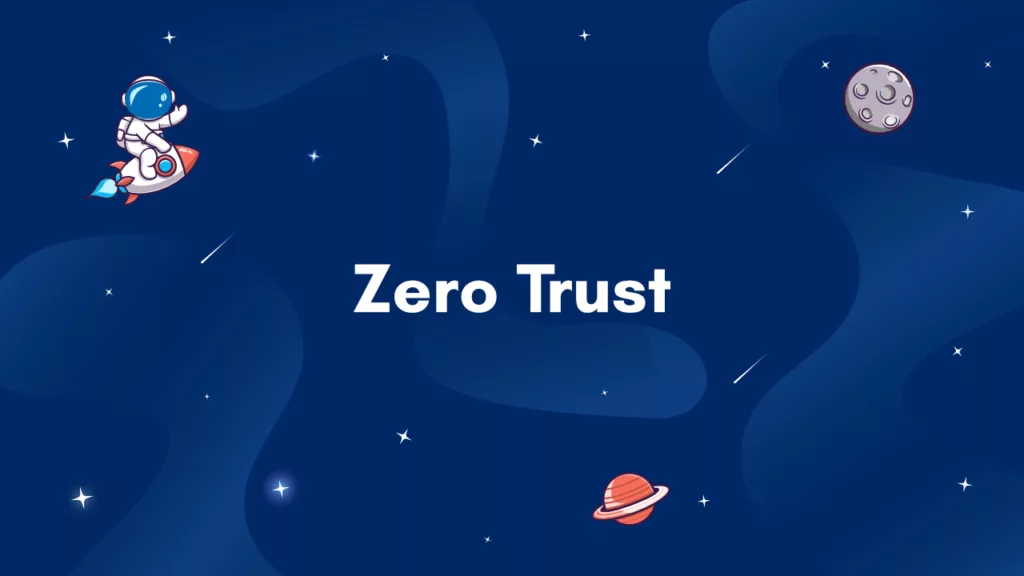If you work in cybersecurity, the chances are that you will have come across the phrase Zero Trust over the past few years. It’s become a real industry buzzword, but there is substance behind the noise on this occasion.
To the outsider, it’s a term that is easy to misinterpret. It sounds draconian and severe and could be perceived as meaning the organization trusts no one when it comes to cybersecurity.
That’s not really the case, though, and it’s more about a change of approach from traditional approaches to cybersecurity, which focused primarily on defending an organization’s perimeters. We believe it’s an approach that fits particularly well with the current cybersecurity landscape and that the time is right for your organization to consider Zero Trust architecture.
Benefits of a Zero Trust Security Framework
Embracing a zero-trust approach fundamentally reduces the potential points of attack, thereby decreasing the likelihood of security breaches. While this is the most apparent advantage, there are additional benefits:
- Compliance Support: Zero trust’s principle of tightly controlled connections helps prevent the exposure of sensitive data, ensuring adherence to compliance standards like NIST 800-207, PCI DSS, HIPAA, and HITECH.
- Enhanced Cloud Access Control: Zero trust security measures can be implemented to offer greater visibility and control over cloud access. By securing workloads, data remains protected even amidst changing environments.
- Mitigation of Data Breach Risks: By treating all entities as potentially hostile, organizations significantly reduce the risk of inadvertent cyber intrusions. This approach minimizes the likelihood of data breaches, and in case of a breach attempt, zero trust deployments are designed to thwart such efforts effectively.
Adopting the zero-trust approach yields immediate benefits. Each sector, asset category, or system transitioned to zero trust protection strengthens overall security posture, making it more challenging for threat actors to exploit vulnerabilities. While striving for complete zero-trust implementation, organizations can already block a significant number of potential attacks simply by increasing their resilience beyond the reach of common cyber threats.
Zero trust methodology starts delivering benefits from day one.
Zero Trust – All About Verification
The challenge around Zero Trust is that there are many different takes on what precisely it means. Broadly speaking, it entails users having to prove their authenticity when they access data or a network application, but some of the specifics can vary.
The importance of Zero Trust architecture to robust cybersecurity was highlighted in the European Union by the Directive of the European Parliament and the Council on measures for a high common level of cybersecurity across the Union. Previous versions of this directive were already adopted by European countries and made into national laws.
Also, the MIT Lincoln Laboratory embarked on a comprehensive study on zero-trust architectures. This study ultimately aimed to deliver recommendations for an effective approach to a zero-trust system, and this included work looking at misperceptions around the concept of Zero Trust. It found that for some, Zero Trust architecture means implementing new products and solutions, or even that it makes systems so hard to access they are rendered unusable.
But it’s really all about verification. For an individual to access systems, data, and networks, they must first verify their identity. It flips the more traditional cybersecurity mantra of ‘trust but verify’ to a new one of ‘never trust, always verify.’ It works on the basis that anyone could have malicious intent and that any device could be targeted, and Zero Trust is increasingly relevant in the current cybersecurity landscape.
The Need for Zero Trust
France is facing an alarming increase in cyber threats. According to a 2023 report, approximately 30% of French companies reported experiencing one to three cyber-attacks in the past 12 months. The most common types of attacks include malware distribution, phishing, and vulnerability exploitation, affecting nearly three-quarters of businesses. Additionally, fraudulent activities, especially those targeting executives, have impacted around four out of ten organizations in the country.
According to a survey by the Deloitte Center for Controllership, over the past 12 months, 34.5% of surveyed executives reported that the accounting and financial data of their companies had been targeted by cyber attackers. Nearly half (48.8%) of senior executives and other leaders expect the number and magnitude of cyber events targeting their companies’ accounting and financial data to increase in the coming year. However, only 20.3% of respondents stated that their company’s accounting and finance teams work closely and consistently with their peers on cybersecurity matters.
Cybercrime is experiencing exponential growth globally. According to Cybersecurity Ventures, the cost of cybercrime is expected to reach $8 trillion in 2023 and $10.5 trillion in 2025. In France, cybercrime costs reached nearly $67 billion in 2022 and are projected to rise to $93 billion in 2023.
In the face of these challenges, the Zero Trust framework is emerging as a strategic solution. BlueFinch-ESBD is ready to assist organizations in addressing these challenges by recommending the best solutions tailored to their needs and leveraging existing technology expenditures to align with this framework. Guided by principles covering each pillar of Zero Trust and supported by a vast ecosystem of alliance relationships, BlueFinch-ESBD enables clients to adopt a customized approach that aligns with their goals and garners support from relevant stakeholders.
Getting Started with Zero Trust
So for any organization wanting to get started with Zero Trust architecture–and any that aren’t should be reconsidering that strategy–what is the best approach? We think that it begins with data.
Data is vital in modern business, so data security should be a priority. This requires a deep understanding of what data needs to be protected, who can access it, where it is stored, and what the repercussions of a breach would be. Once this has all been established, only then can an organization properly think about finding the right data security solution for its specific requirements.
The selection and layering of different solutions lie at the heart of successful Zero Trust architecture, which is not a product but a new approach to cybersecurity. Organizations in most industries use GoAnywhere MFT as part of their Zero Trust architecture.
Add Secure Managed File Transfer to Your Zero Trust Architecture
One of the most robust methods of secure file transfer is managed file transfer (MFT). MFT software solutions protect your data when it is most vulnerable by encrypting it in transit. That way, you can be confident that only the intended recipient can access the file, and that they receive the data unadulterated.




